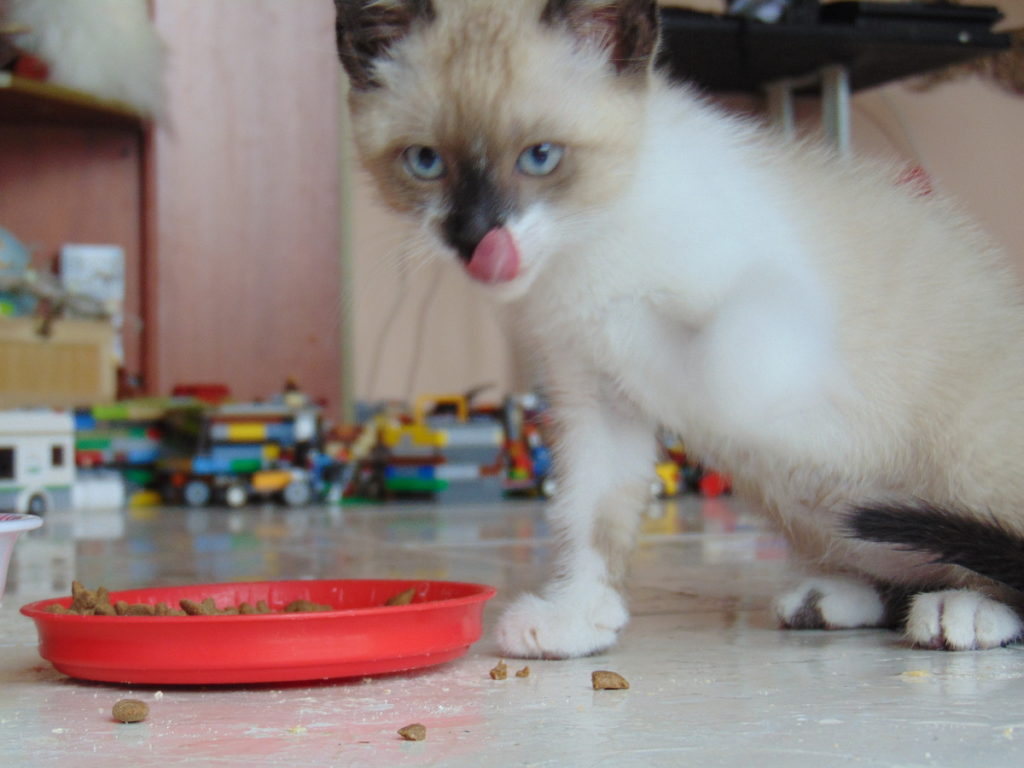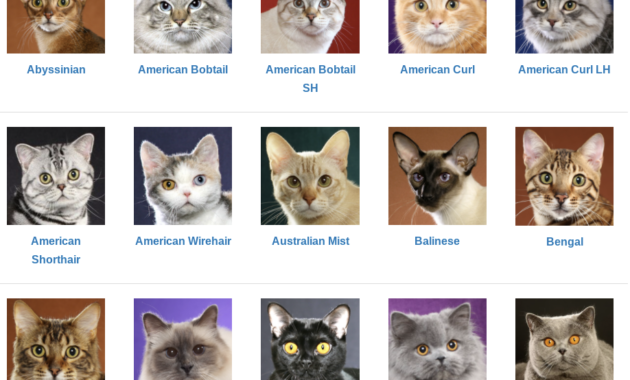Understanding the nuances of cat skin conditions is crucial for every conscientious cat owner. From the pesky invaders like fleas and mites to the more complex issues such as ringworm and allergies, feline skin health demands careful observation and prompt action.
Recognizing the subtle signs that something might be amiss with your cat's skin can be the key to early intervention and successful treatment. By unraveling the mysteries of these common ailments, cat owners can empower themselves to provide their beloved feline companions with the care and attention they deserve.
Key Takeaways
- Fleas, mites, lice, and allergies are common causes of skin issues in cats.
- Prompt vet treatment is crucial to address infections, mange, and allergic dermatitis.
- Skin cancer can develop in cats, especially those with light-colored fur.
- Regular vet check-ups and proper grooming can help prevent and manage various skin conditions in cats.
Fleas in Cats
Fleas are a common parasitic infestation in cats, particularly prevalent during warmer weather, causing itching and discomfort primarily in hard-to-groom areas like the head and neck. Owners may notice their cat excessively scratching, and flea dirt, resembling tiny black specks, may be visible in the fur.
To address fleas effectively, it is advisable to consult a veterinarian for appropriate medications that can kill existing fleas and prevent future infestations. Additionally, thorough cleaning of the cat's bedding and environment is crucial to eliminate any remaining fleas and eggs.
Prompt action is essential to alleviate the cat's discomfort and prevent the spread of fleas to other pets or household members.
Ear Mites Symptoms
Ear mites are common parasitic pests that can afflict cats, causing symptoms such as itching, head shaking, and ear scratching. If you suspect your cat may have ear mites, it's essential to recognize the signs early to seek proper treatment. Here is a table outlining common symptoms associated with ear mites in cats:
| Symptom | Description |
|---|---|
| Intense Itching | Cat may scratch ears often |
| Head Shaking | Vigorous shaking of the head |
| Ear Scratching | Frequent scratching of ears |
Lice Identification
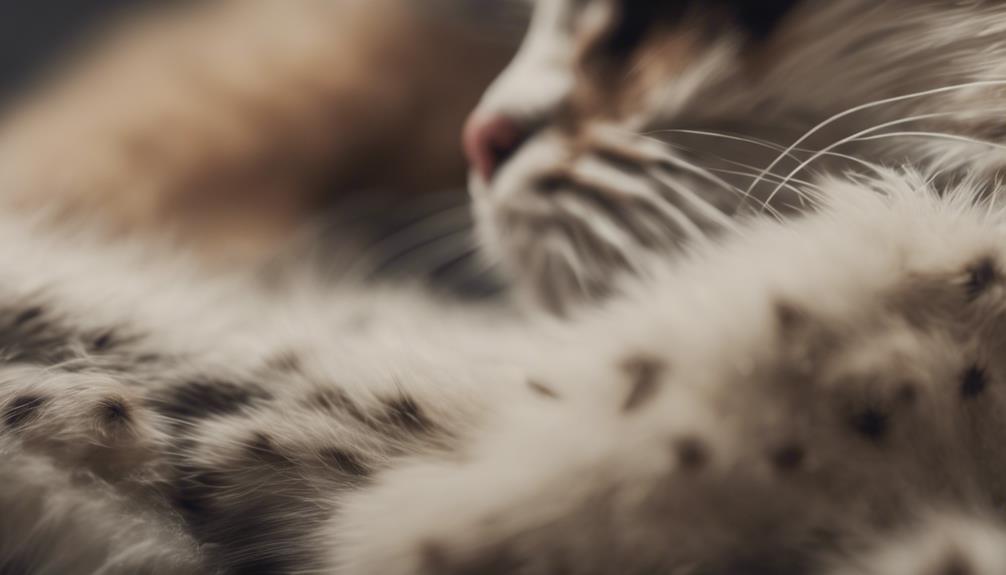
Identifying lice on cats involves parting the fur to inspect for whitish lice eggs and observing adult lice resembling specks of dirt.
- Look closely: Check near the cat's skin for lice eggs and adult lice.
- Use a fine-tooth comb: Comb through the fur to catch any lice or eggs.
- Consult a veterinarian: Seek professional advice for proper diagnosis and treatment options.
Lice infestations can be concerning, but with vigilant observation and prompt action, they can be effectively managed. Partnering with a vet ensures the best care for your feline companion's well-being.
Cat Allergy Signs
Allergic dermatitis, a common skin condition in cats, manifests through various signs indicating an allergic reaction. Cats may exhibit signs such as itching, redness, and skin irritation due to allergens like food, fleas, pollen, dust, or mold. Recognizing these allergy signs can help in managing the condition effectively. Here is a table summarizing common cat allergy signs:
| Allergy Sign | Description |
|---|---|
| Itching | Persistent scratching or licking of the skin |
| Redness | Inflammation or discoloration of the skin |
| Skin Irritation | Rashes, bumps, or hot spots on the skin |
| Grooming Obsession | Excessive grooming leading to hair loss |
| Sneezing | Unusual sneezing, especially after exposure |
Understanding these signs can aid in identifying and addressing allergic dermatitis in cats effectively.
Yeast Infections
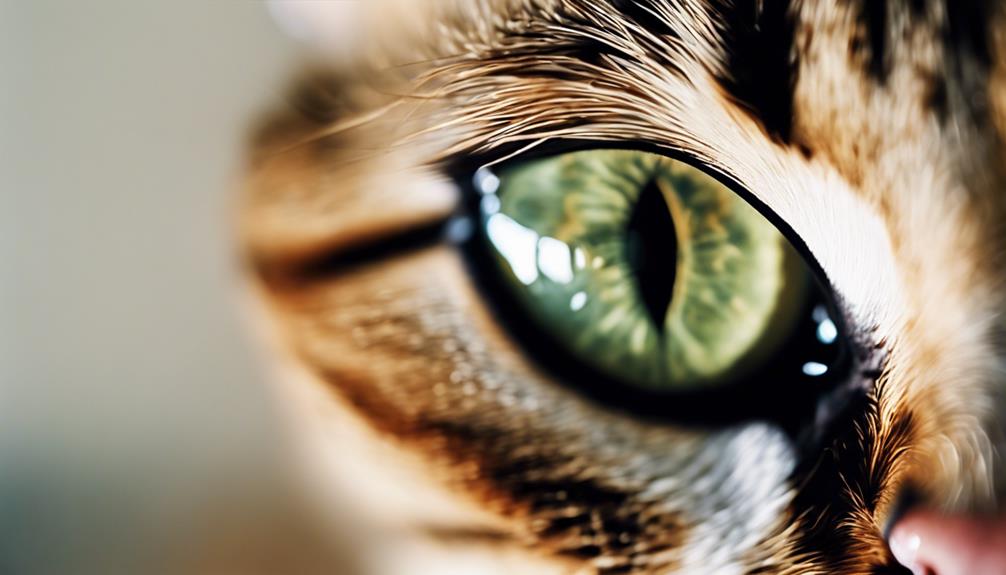
Yeast infections in cats can be triggered by various medical conditions, leading to discomfort and skin issues.
- Moist Environments: Yeast thrives in warm, moist areas of the body.
- Weakened Immune System: Cats with weakened immune systems are more susceptible to yeast infections.
- Antibiotic Use: Prolonged use of antibiotics can disrupt the natural balance of yeast on the skin.
It is essential to consult a veterinarian if you suspect your cat has a yeast infection. Treatment may involve antifungal medications, topical creams, or changes in diet to help alleviate the discomfort and resolve the infection.
Bacterial Skin Infections
Bacterial skin infections in cats can manifest around hair follicles and present symptoms such as redness, discharge, and a foul odor on the skin. These infections can be uncomfortable for your furry friend and may require prompt treatment. Here is a table to provide a quick overview:
| Symptom | Description |
|---|---|
| Redness | Indicates inflammation on the skin. |
| Discharge | May be pus-like or watery. |
| Foul Odor | Unpleasant smell due to infection. |
If you notice any of these signs, consulting with a veterinarian is essential for proper diagnosis and treatment. Antibiotics may be necessary to clear up the infection and relieve your cat's discomfort.
Feline Acne Treatment
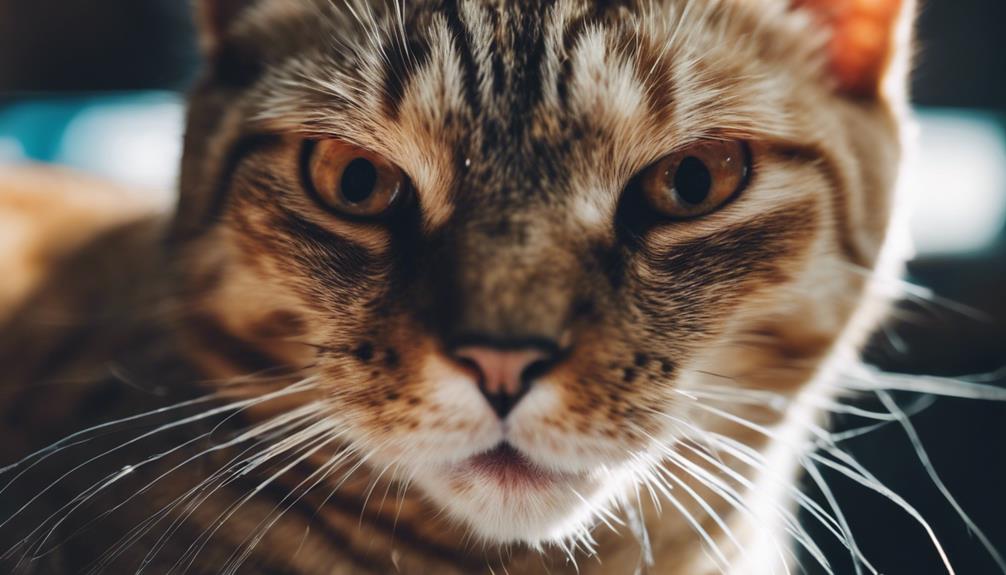
Addressing feline acne in cats involves implementing targeted treatments to alleviate symptoms and promote skin health. When dealing with feline acne, consider the following:
- Special ointments, wipes, or shampoos are commonly used for treatment.
- Antibiotics may be necessary for infected areas to combat bacteria.
- Making dietary changes and using nonporous food dishes can assist in clearing up chin acne.
These simple steps can help manage and improve feline acne, ensuring your cat's skin remains healthy and clear.
Skin Cancer Risks
Skin cancer in cats poses a significant health risk, especially for those with white or light-colored fur, warranting vigilance in monitoring and preventive measures. Sun exposure is a known factor in the development of skin cancer in cats, making it crucial to protect vulnerable felines from excessive sunlight.
White and light-haired cats are particularly susceptible to the harmful effects of UV rays. If a cat shows signs of skin abnormalities or lesions, a veterinarian may recommend a biopsy for a definitive diagnosis. Treatment options for skin cancer in cats may include surgical removal of the affected area, chemotherapy, or radiation therapy.
Early detection and intervention play a vital role in improving the prognosis for cats with skin cancer, highlighting the importance of regular skin checks for all feline companions.
Skin Cancer Diagnosis
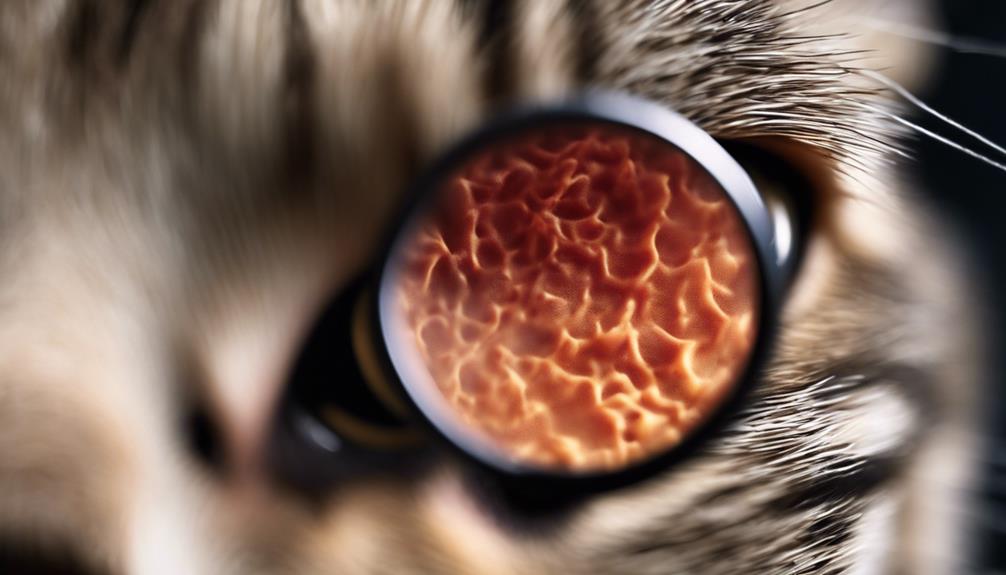
Early detection methods play a crucial role in identifying and diagnosing skin cancer in cats. To aid in the diagnostic process, here are three key points to consider:
- Regular Skin Checks: Conduct routine inspections of your cat's skin, looking for any unusual lumps, bumps, or sores that could indicate skin cancer.
- Consultation with a Veterinarian: If you notice any suspicious skin changes, seek prompt evaluation from a veterinarian experienced in diagnosing feline skin conditions.
- Biopsy Procedure: In cases where skin cancer is suspected, a biopsy may be recommended by the veterinarian to confirm the diagnosis and determine the appropriate treatment plan.
Skin Cancer Treatments
Effective treatment options for skin cancer in cats typically involve a combination of surgical procedures and specialized therapies tailored to the individual animal's condition. Upon diagnosis by a veterinarian, a treatment plan may include surgical removal of the cancerous growth, especially if it's localized.
In cases where the cancer has spread or is inoperable, chemotherapy and radiation therapy may be recommended to target and eliminate cancer cells. These treatments aim to improve the cat's quality of life and potentially extend their lifespan.
Regular follow-up appointments with the vet are essential to monitor the cat's response to treatment and make any necessary adjustments for optimal care. Early detection and intervention play a crucial role in managing skin cancer in cats.
Dry Skin Issues
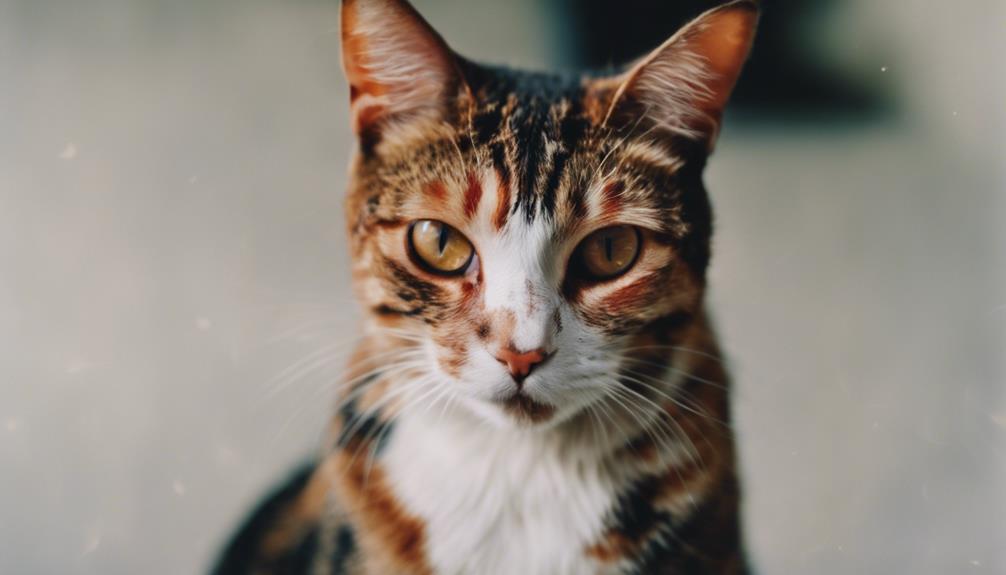
Dry skin conditions in cats can lead to discomfort and potential health concerns if left untreated.
- Symptoms: Look out for flaky skin, excessive itching, and redness.
- Causes: Dry skin can be caused by poor diet, weather changes, or underlying health issues.
- Treatment: Regular grooming, humidifiers, and dietary supplements can help alleviate dry skin in cats.
Hair Loss Concerns
Hair loss in cats can be indicative of various underlying health issues and should not be overlooked. Cats may experience hair loss due to issues such as allergies, parasitic infestations, infections, hormonal imbalances, or stress. It is essential to observe the pattern of hair loss, whether it's localized or generalized, along with any accompanying symptoms like itching, redness, or skin lesions.
If your cat is losing hair, a veterinary examination is crucial to determine the root cause and appropriate treatment. Depending on the diagnosis, treatment options may include medications, dietary changes, parasite control, or addressing any underlying medical conditions. Prompt attention to hair loss concerns can help maintain your cat's health and well-being.
Dandruff Causes

Skin conditions in cats can manifest in various ways, with dandruff being a common concern that can indicate underlying health issues.
- Causes of Dandruff in Cats:
- Poor Diet: Lack of essential nutrients can lead to dry skin.
- Environmental Factors: Changes in humidity levels or grooming habits.
- Underlying Health Conditions: Such as allergies, parasites, or hormonal imbalances.
Dandruff in cats should not be ignored, as it can be a symptom of more significant health issues. Monitoring your cat's skin and coat health, ensuring a balanced diet, and seeking veterinary advice if dandruff persists are essential steps in maintaining your feline companion's well-being.
Excessive Hair Loss
Experiencing excessive hair loss in cats can be a concerning indication of various underlying health issues that warrant prompt veterinary attention. Cats may lose hair due to reasons such as nutritional deficiencies, hormonal imbalances, or skin infections. To better understand the potential causes of excessive hair loss in cats, consider the following factors:
| Reasons for Excessive Hair Loss | Description | Treatment |
|---|---|---|
| Nutritional Deficiencies | Lack of essential nutrients can lead to poor coat health. | Adjust diet or provide supplements. |
| Hormonal Imbalances | Hormonal issues can disrupt the hair growth cycle. | Hormone therapy or medications as prescribed. |
| Skin Infections | Infections like ringworm can cause hair loss. | Veterinary-recommended antifungal treatments. |
Serious Skin Conditions
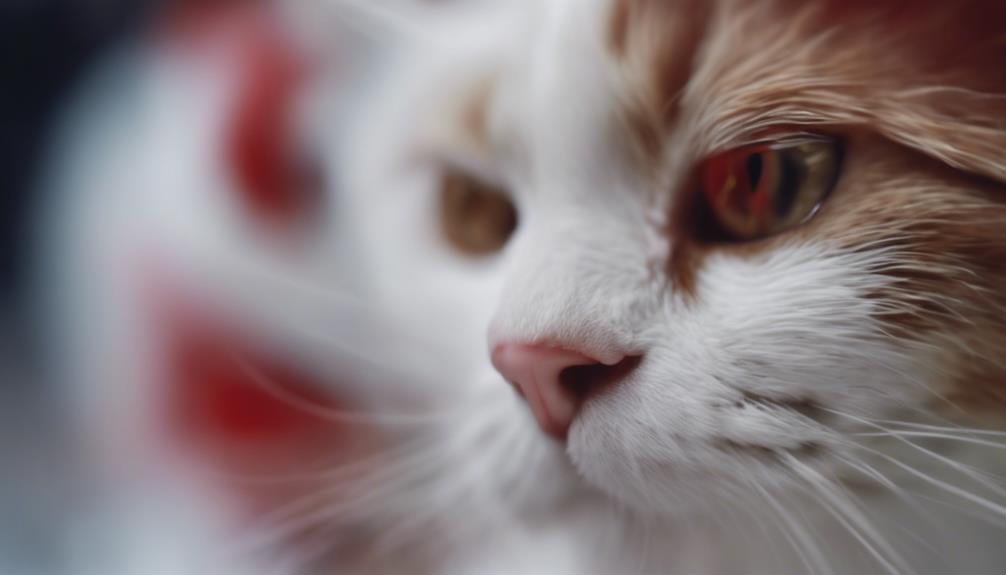
One significant aspect to consider when addressing feline health concerns is the presence of severe dermatological conditions. These serious skin conditions can significantly impact a cat's overall well-being and require prompt attention and appropriate treatment.
To provide insight into this crucial topic, let's delve into the following key points:
- Skin Cancer: Sun exposure can lead to skin cancer in cats, with white and light-haired cats being more vulnerable.
- Severe Infections: Yeast and bacterial infections can cause redness, discharge, and unpleasant odors on the skin, often necessitating anti-fungal medications or antibiotics.
- Chronic Skin Disorders: Conditions like feline acne may require ongoing management and specialized care to alleviate symptoms and prevent recurrence.
Frequently Asked Questions
Can Cats With Skin Conditions Be More Prone to Developing Behavioral Issues?
Cats with skin conditions may exhibit behavioral issues due to discomfort, irritation, or pain. Itchy skin can lead to excessive grooming or aggression. Addressing underlying skin problems through vet care and treatment can help alleviate behavioral changes in affected cats.
Are There Any Natural Remedies That Can Help Alleviate Cat Skin Conditions?
Natural remedies for cat skin conditions can help alleviate symptoms. Consult a veterinarian for safe options like oatmeal baths for itching, coconut oil for dry skin, and apple cider vinegar for infections. Always seek professional advice for effective treatment.
How Can a Cat Owner Prevent Their Cat From Getting Sun Exposure-Related Skin Cancer?
To prevent sun exposure-related skin cancer in cats, owners should limit outdoor time during peak sun hours, provide shaded areas, and use pet-safe sunscreen. Regular veterinary check-ups can aid in early detection, while protective clothing or indoor play can reduce risks.
Are There Any Specific Breeds of Cats That Are More Susceptible to Certain Skin Conditions?
Certain cat breeds like Devon rex are prone to yeast infections. White/light-haired cats are more vulnerable to skin cancer due to sun exposure. Recognizing breed-specific susceptibilities can aid in early detection and tailored treatment for skin conditions.
Can Stress and Anxiety in Cats Contribute to the Development of Skin Issues?
Stress and anxiety in cats can contribute to skin issues. Behavioral changes from stress may manifest as excessive grooming or self-induced hair loss. Proper enrichment, calming strategies, and veterinary guidance can help manage and prevent stress-related skin conditions in felines.
Conclusion
In conclusion, understanding cat skin conditions is crucial for maintaining feline health and well-being. By recognizing the symptoms and causes of various skin ailments such as fleas, ear mites, ringworm, and more, cat owners can effectively treat and manage these issues.
Taking proactive steps to address skin problems, whether through medication, grooming, or environmental changes, can help ensure that cats remain healthy and comfortable. Stay informed and attentive to your cat's skin health for a happy and thriving companion.

